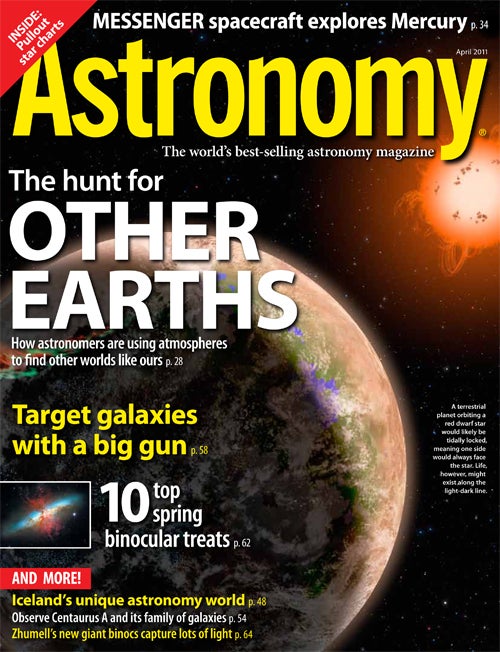
WAUKESHA, Wis. — Little seems to capture the public imagination like the search for planets similar to our own. No longer the stuff of science fiction, astronomers are closer than ever to finding other Earths, complete with the possibility of alien life.In “Hunting for earthlike planets,” Space Telescope Science Institute News Director Ray Villard goes step by step through the science behind such a feat, explaining what astronomers know and what they expect. “Less than 20 years ago, finding such a world would have been out of the question,” he writes. “Now, it’s a question of when.”Of course, it won’t be easy. After finding a potential planet and determining that it orbits within its star’s habitable zone — the area allowing the body’s water to remain liquid, a prerequisite for life as we know it — astronomers must then “sniff out” the planet’s atmosphere to see how closely it matches Earth’s. But with ever-more powerful technology, and ever-more ingenious scientists, we’re rapidly closing in on the ultimate goal of finding an inhabited planet. “If we get really lucky,” Villard writes, “the long-sought answer could come within a few decades.”Pick up the April issue of Astronomy, on newsstands March 1, to learn more about how astronomers are working to find other Earths and what these worlds might be like.
“Messages from Mercury”
After more than 6 years and almost 5 billion miles (8 billion kilometers), NASA’s MESSENGER spacecraft is finally due in March to begin orbiting its final destination: the innermost planet Mercury. Astronomy Senior Editor Richard Talcott takes readers along for the ride, discussing the ambitious goals and even some of the latest data the craft gathered during flybys past the planet on its journey, formally named MErcury Surface, Space ENvironment, GEochemistry, and Ranging. Among the secrets astronomers hope it will uncover are the details behind Mercury’s oddly high density, the origins of its magnetic field and wispy atmosphere, and the possibility of water ice waiting within its darkest craters.
“Zhumell’s 25×100 binoculars capture lots of light”
These “monsters” get a glowing review from binocular expert and Astronomy Contributing Editor Phil Harrington. Bigger sometimes really means better, and the 3.9-inch (100 millimeters) objective lenses offer magnificent views of the skies for an unexpectedly good price.
Also in the April 2011 Astronomy
- “Star-struck in Iceland” — The tiny North Atlantic island nation boasts a large amateur astronomical society, inspires the world’s space artists, and features some of the most dazzling auroral displays anywhere.
- “Explore the Centaurus A galaxy cluster” — Point your telescope toward the south this spring, and target this group of little-observed objects.
- “Target galaxies with a big gun” — These eight spring showpieces reveal exquisite detail through large scopes.
- “10 top spring binocular treats” — All you need to enjoy these gems is a dark sky and two eyes.
- “The Sky This Month” — Exclusive pullout star charts will guide you through April’s night sky.
- The April issue of Astronomy also includes Astro News, Bob Berman’s Strange Universe, Glenn Chaple’s Observing Basics, David H. Levy’s Evening Stars, Stephen James O’Meara’s Secret Sky, Tony Hallas’ Imaging the Cosmos, Ask Astro, Beautiful Universe, Deep-sky Showcase, New Products, Reader Gallery, and The Cosmic Grid.









